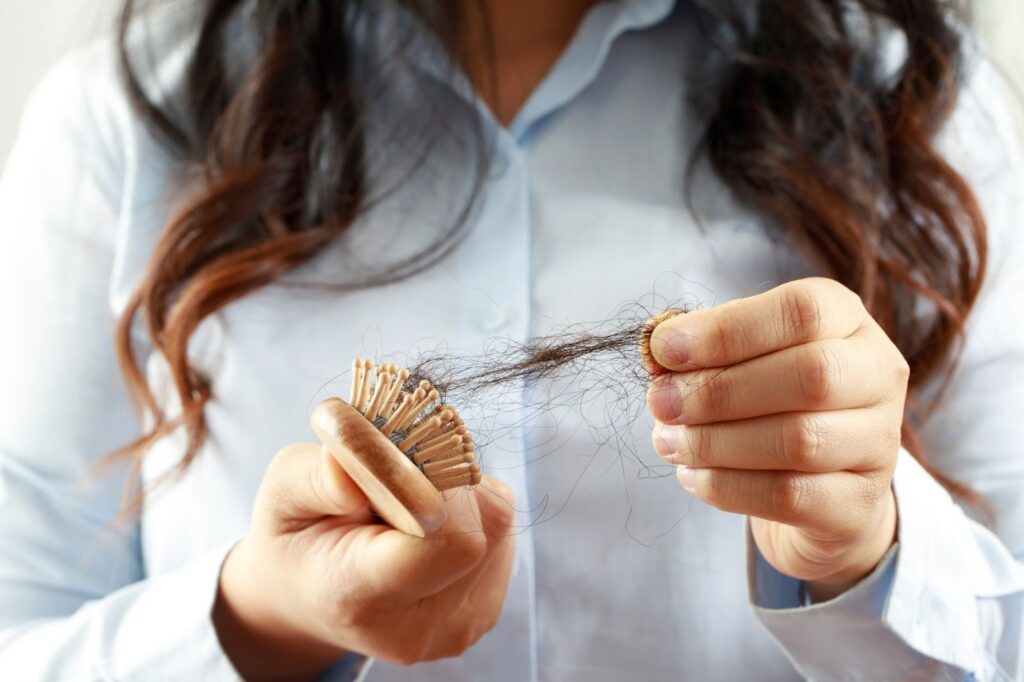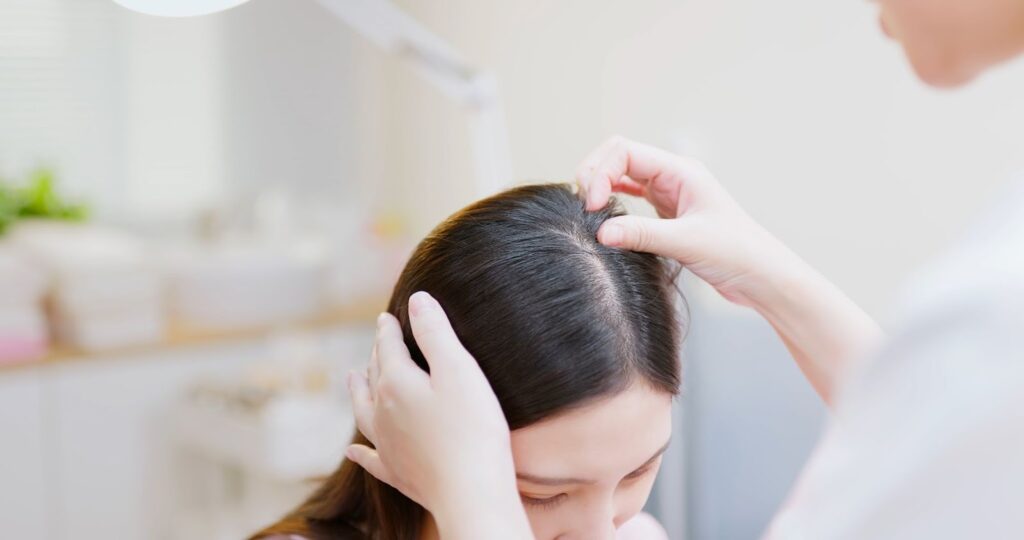
Hair loss prevention requires a proactive, lifelong approach. Whether you’re in your 20s noticing subtle thinning or in your 50s addressing advanced shedding, understanding how to prevent hair loss at each stage can make a measurable difference. By recognizing the early signs of hair loss, choosing evidence-based treatments, and maintaining overall scalp health, you can effectively stop hair fall and preserve natural density over time.
How the Hair Growth Cycle Affects Hair Loss
Every healthy scalp follows a natural growth cycle consisting of three key phases — anagen (growth), catagen (transition), and telogen (resting). Disruption in this cycle due to genetics, hormones, nutritional deficiencies, or medical conditions can trigger excessive shedding and long-term thinning.
Hair restoration specialists emphasize that prevention starts with understanding these mechanisms. Identifying whether the cause is androgenetic alopecia, stress-related telogen effluvium, or nutritional imbalance ensures that treatment targets the root issue rather than symptoms alone.
Early Signs of Hair Loss and When to Act
Recognizing early signs of hair loss allows for timely intervention and improved outcomes. These signs often include:
- Gradual widening of the part line or visible scalp under light
- Increased shedding during showering or brushing
- Miniaturized hairs or finer texture in the frontal or crown regions
- Reduced volume or ponytail thickness over time
Early action, such as consulting a dermatologist or a qualified specialist in hair transplant services in Edmonton, can help slow or stop hair fall before it becomes advanced. Professional evaluation ensures that any necessary treatments are tailored to the underlying cause and individual hair characteristics.
Preventing Hair Loss in Your 20s and 30s
Early adulthood is when genetic predispositions often begin to appear. For individuals noticing mild thinning or increased shedding, consistency is key.
Effective prevention strategies include:
- Using clinically backed topical treatments such as minoxidil under medical supervision
- Maintaining a nutrient-rich diet with iron, zinc, and vitamin D
- Limiting chemical or heat-based styling that damages follicles
- Managing stress through regular exercise and adequate sleep
At this stage, early intervention can delay or reduce progression significantly. Combining topical therapy with lifestyle adjustments provides the strongest foundation for long-term hair loss prevention.
Managing Hair Thinning in Your 40s and Beyond
As hormonal fluctuations become more prominent, men and women in their 40s and 50s often experience accelerated thinning. Estrogen decline in women and increased dihydrotestosterone (DHT) sensitivity in men are major contributors.
For this age group, professional evaluation becomes essential. Dermatologists may recommend a combination of:
- Prescription DHT-blocking medications
- Low-level laser therapy to stimulate follicular activity
- Regular scalp exfoliation to improve circulation
- Maintaining realistic expectations about density and coverage
Continued hair loss prevention efforts remain critical even if restoration treatments are being considered.
Role of Nutrition, Hormones, and Stress in Hair Fall
Long-term scalp health depends heavily on internal balance. Deficiencies in iron, biotin, or essential fatty acids can weaken follicles and accelerate shedding. Hormonal imbalances, such as thyroid dysfunction or post-partum changes, can also trigger temporary or chronic loss.
Stress further amplifies these effects by shortening the growth phase of the hair cycle. Maintaining hormonal balance, managing stress levels, and supplementing where necessary are foundational steps in learning how to prevent hair loss effectively.
Exploring Evidence-Based Treatments

When evaluating products, it’s important to distinguish between cosmetic improvement and medically supported efficacy. The best hair loss shampoo formulations typically include ingredients like ketoconazole or caffeine, which support scalp health and reduce inflammation associated with shedding.
However, no shampoo alone can fully stop hair fall or restore lost density. Instead, it complements other treatments such as:
- Topical minoxidil
- Oral finasteride for men (prescribed under supervision)
- Platelet-rich plasma (PRP) therapy
- Microneedling to enhance absorption and circulation
Adherence to prescribed regimens and regular follow-up with specialists ensure sustained results.
When to Consider Professional Evaluation
When preventive measures and over-the-counter solutions no longer yield results, consulting a qualified hair restoration specialist is the next step. Clinical evaluation helps determine if surgical intervention or advanced therapies are suitable options.
A professional may recommend medical management, PRP therapy, or hair transplant services for candidates with stable donor regions and realistic expectations. Clinics following the International Society of Hair Restoration Surgery (ISHRS) standards ensure procedures are performed safely and with precision.
Understanding candidacy, risks, and long-term maintenance is essential before committing to any procedure.
Final Thoughts on Long-Term Hair Loss Prevention
Preventing hair loss requires ongoing care and timely action. Pay attention to early signs of hair loss, maintain healthy scalp habits, and address factors such as nutrition, hormones, and stress.
Consult a qualified specialist when needed to ensure any treatments, medical or procedural, are appropriate for your hair and scalp. Consistently monitoring your hair, making informed choices, and maintaining proper scalp care preserves natural hair density and promotes long-term scalp health at every stage of life.


